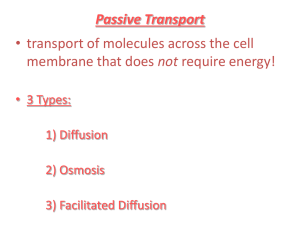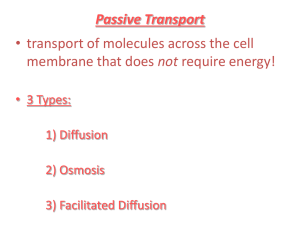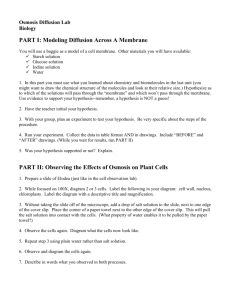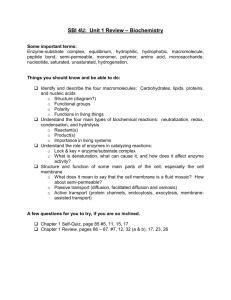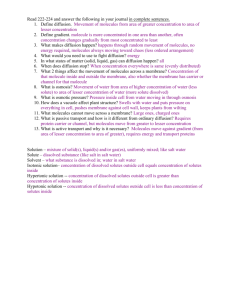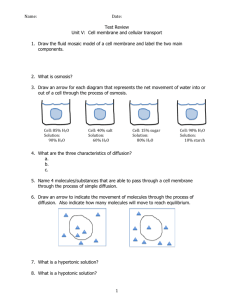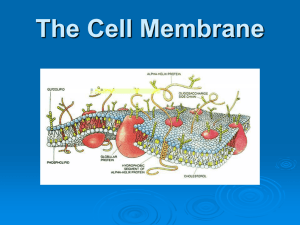Act 40 Background Information
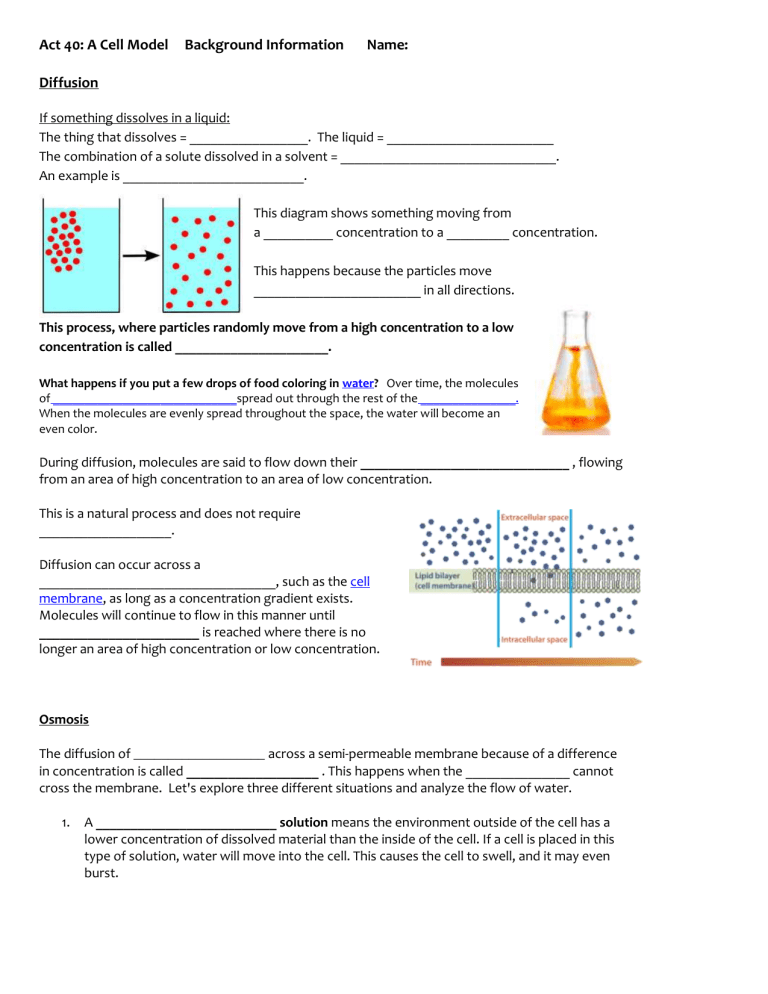
Act 40: A Cell Model Background Information Name:
Diffusion
If something dissolves in a liquid:
The thing that dissolves = _________________. The liquid = ________________________
The combination of a solute dissolved in a solvent = _______________________________.
An example is __________________________.
This diagram shows something moving from a __________ concentration to a _________ concentration.
This happens because the particles move
________________________ in all directions.
This process, where particles randomly move from a high concentration to a low concentration is called ______________________.
What happens if you put a few drops of food coloring in water ? Over time, the molecules of _____________________________ spread out through the rest of the _______________.
When the molecules are evenly spread throughout the space, the water will become an even color.
During diffusion, molecules are said to flow down their ______________________________ , flowing from an area of high concentration to an area of low concentration.
This is a natural process and does not require
___________________.
Diffusion can occur across a
__________________________________, such as the cell membrane , as long as a concentration gradient exists.
Molecules will continue to flow in this manner until
_______________________ is reached where there is no longer an area of high concentration or low concentration.
Osmosis
The diffusion of ___________________ across a semi-permeable membrane because of a difference in concentration is called ___________________ . This happens when the _______________ cannot cross the membrane. Let's explore three different situations and analyze the flow of water.
1.
A __________________________ solution means the environment outside of the cell has a lower concentration of dissolved material than the inside of the cell. If a cell is placed in this type of solution, water will move into the cell. This causes the cell to swell, and it may even burst.
2.
A __________________________ solution means the environment outside of the cell has more dissolved material than inside of the cell. If a cell is placed in this type of solution, water will leave the cell. This can cause a cell to shrink and shrivel.
3.
An _________________________ solution is a solution in which the amount of dissolved material is equal both inside and outside of the cell. Water still flows in both directions, but an equal amount enters and leaves the cell.
Applications of Osmosis
How do marine animals keep their cells from shrinking? How do you keep your blood cells from bursting? Both of these questions have to do with the cell membrane and osmosis. Marine animals live in salt water, which is a hypertonic environment; there is more salt in the water than in their cells. To prevent losing too much water from their bodies, these animals intake large quantities of salt water and then secrete the excess salt.
Red blood cells can be kept from bursting or shriveling if put in a solution that is isotonic to the blood cells. If the blood cells were put in pure water, the solution would be hypotonic to the blood cells, so water would enter the blood cells, and they would swell and burst (Figure below ).
_______________________ causes these red blood cells to change shape by losing or gaining water.
Summary
Diffusion is the random movement of molecules from an area of high concentration to an area of low concentration.
Osmosis is the diffusion of water across a semi-permeable membrane because of a difference in concentration and the solute cannot pass through the membrane.



